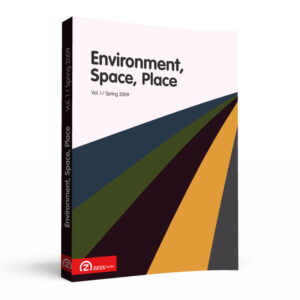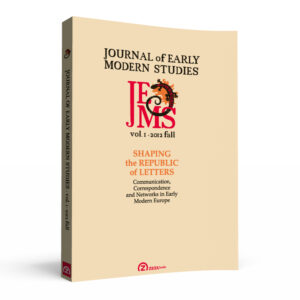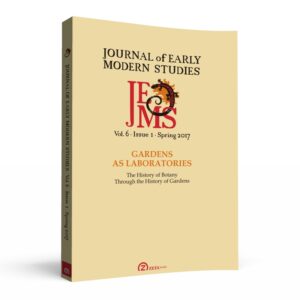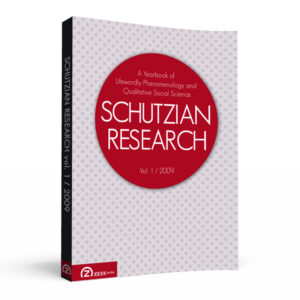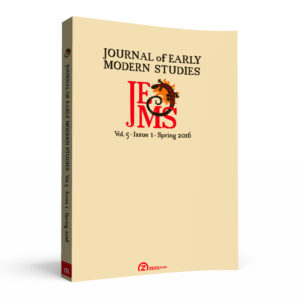TABLE OF CONTENTS
Abstract: The aim of this article is to contribute to the understanding of the relations existing between, on the one hand, some specific types of built-spaces and, on the other, the manner in which man belonging to a given culture defines a particular way of conceiving and inhabiting the world. The interdependence between the forms of the construction of the human environment and the intellectual and practical articulation of social life has been the object of numerous researches. The focus of this analysis will be, more specifically, on built-spaces that play a decisive role in the shaping of both the forms or orientation of collective life and the underlying worldviews, built-spaces that, in virtue of this two-fold function, deserve to be called world-making. The approach will be diachronical and comparative. I will first reconstruct, on the basis of phenomenology-inspired reading of Mircea Eliade’s works, the representative as well as orientative function of sacred built-space within certain religious traditions and its relations with a specific conception of the world in general and of the earth-sky relation in particular. Subsequently, I will show that the overthrow of these cosmological and metaphysical beliefs during the scientific revolution, has deprived sacred space of its original meaning, while rendering at once possible and necessary a completely new type of built-space, the laboratory, which exerts, in an utterly different way, a world-making function. In this way, this article develops yet another comparison between the religious conception of the relation between man and the world, and the conception issued by the modern scientific and technological development.
Abstract: As a spiritual or meditative practice solitude implies more than mere silence or being alone. While these are perhaps indispensable components, it is possible to be alone or to live in silence and nevertheless be unable to reconfigure these into genuine solitude. Solitude is also more than being in some remote or inaccessible place. Even though geographical isolation might be conducive to solitude, with rare exceptions human beings have seldom sought solitude in complete seclusion in the wilderness. The places where human beings have sought solitude have in the end been human places, human-built places. It should come as no surprise then that through architecture humans beings have sought to build solitude, to construct, through stone and glass and wooden structures, places that are conducive to and encourage solitude. Such structures include individual hermitages, monasteries, temples and even cathedrals. In each case the purpose is to translate or reconfigure a natural geographical place into a space, a human space, where solitude as a spiritual or meditative practice becomes possible. What the individual sojourner brings to the experience is an inner openness to the architecture, to the natural environment and to the spiritual realm which interweave to create solitude. This paper examines (1) the spiritual need to experience solitude, (2) what it is that solitude requires and (3) the endeavor to create solitude through architecture and the challenges it poses to both architecture and spiritual practice. In particular the paper explores and compares solitude’s architectural expression in three Medieval Christian monastic orders – the Camaldolesce Order, the Carthusian Order and the Cistercian Order. Despite their common heritage these orders realize solitude, as an essential spiritual value, through unique architectural expressions.
Abstract: Over and above the probable peaking of worldwide oil production as a current reality, the arrival of hard limits on all energy resources is very much nearer in the future than many people realize. The public discourse on Peak Oil and the associated arrival of hard limits on energy availability has attracted more than its share of brilliant and creative minds. In addition to scientific and technical analysts, this group includes a fair number of generalists who have engaged in broader forms of reflection upon the likely economic, social, political, and cultural effects of Peak Oil and other hard energy limits on the structure of current world civilization. In this paper, I select for examination three such generalists who are both especially talented and widely read by those having an interest in this topic: James Howard Kunstler, John Michael Greer, and Dmitri Orlov. My intention is to survey their central ideas in turn, with a view to forming a reasonably well-developed and concrete notion as to how the impending arrival of hard limits on energy consumption will affect the structure of built space in coming decades. I focus both on the macro-infrastructural level and on what one might term the micro-infrastructural level of the built space within which the denizens of contemporary industrial civilization live their daily lives. The principal focus of the discussion will be on the situation in the United States, though many of the lines of argument presented may be applied much more broadly if suitably adjusted in light of locally prevailing conditions elsewhere.
Abstract: Drawing on the phenomenology of Merleau-Ponty, this paper describes the role of habit in the cycle of preconfiguration and reconfigurion of place in architectural practice, especially in the design of homes – les habitations – in which habit and inhabitation intertwine. In this paper, Proust’s novel provides the primary examples of the intertwining of habit and inhabitation. Proust shows us that an artist (or architect) acquires a relation to a prefigured place into which she or he is already thrown and can only reshape that world from the inside out, not the top down. The paper provides an overview of the influence of place in Proust’s novel, then relate these examples to Merleau-Ponty’s reflections on place, along the way considering Merleau-Ponty’s brief mentions of architecture and whether we can justifiably apply his painting-based aesthetics to architecture. Finally, the paper suggests what this might mean for architectural design practice, especially for new digital tools that use gesture to better reflect an embodied relation to place. The program of the paper is to trace the origin of “program” – in its architectural sense of the use-structure of a building and its mediation by habits and inhabitation in the design process. The design process – right down to whether or not architects use pens and pencils or digital tools —must come up for revision if phenomenological evidence (both literary and philosophical) is truly to transform the practice.
Randy Laist, “The Style of What is to Come”:Representations of the World Trade Center in the Novels of Don DeLillo
Abstract: Since the very week of September 11, 2001, commentators have remarked on the apparent clairvoyance evidenced in the novels of the American writer Don DeLillo. DeLillo’s novels have always represented the Twin Towers as gargantuan symbols of latent catastrophe. The towers have been significant to DeLillo as a particularly gargantuan representation of the manner in which modern mass-consciousness expresses itself in the form of material technologies. Throughout his career, DeLillo has described the World Trade Center not only as a physical structure, but as a kind of schematic of the future of the culture that created it. In the lines and angles of the towers, DeLillo seems to discern the “lines of intentionality” inherent in the culture of advanced technology itself, and traces them out to the conclusions toward which they seem to lead. In this paper, I will examine the manner in which DeLillo has “read” the World Trade Center as an architectural confession of a distinctly American wish to negate the human scale, to make the world over as an artificial environment, and to look forward to the surpassing of bodily and social existence. In four novels written before 9/11, DeLillo crafts an image of the World Trade Center as a sculptural representation of America’s own will to self-destruction and in his most recent novel, Falling Man, DeLillo illustrates the kind of existence that lies on the other side of this self-destruction.


